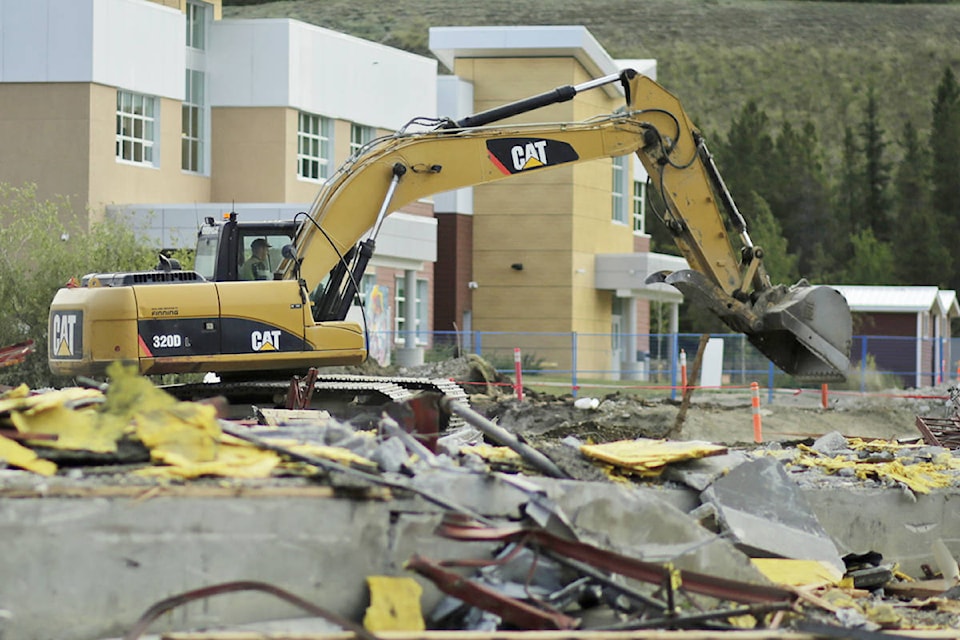The amount of contaminated soil found under the old F.H. Collins school has ballooned to 900 cubic metres and the environment department isn’t finished cleaning up yet.
Environment Yukon released its latest update on the state of the property July 24. Workers continue to remove dirty soil from the ground after they discovered more contamination than expected while demolishing the school last month.
Cleanup crews have reached the edge of the contamination in most directions, the department’s spokesperson Roxanne Stasyszyn said in an email. Areas to the north and southeast of the school are still being cleaned up.
“While we cannot be certain until we have reached the limits of contamination in all directions, we anticipate another one to two weeks to complete excavation of all contaminated soil. Once all contaminated soil is removed, we will continue to monitor groundwater through wells installed at the site.”
The mess is blamed on heating oil that leaked out of the school’s old underground tanks. Officials originally thought they were just dealing with a small leak under the old school’s foundation.
When demolition of that part of the school began last month, officials found the old heating system actually had small holes causing even more fuel to leak.
No one can say how long fuel had been leaking out of the pinholes. The tanks were removed in 2009.
The F.H. Collins site is about 400 metres from one of the wells connected to the Selkirk Aquifer, the source of Whitehorse’s drinking water.
Tests on the drinking water have come back clean, Stasyszyn said. Officials have said from the beginning that the risk to the city’s drinking water is low. The contamination is shallower than the level from which the drinking water is drawn.
Groundwater not used for drinking has been contaminated. As crews remove contaminated soil they have also been taking out the ground water at the bottom of the excavated holes.
To date, 15,000 gallons of water has been removed, Stasyszyn said. The water will be treated at a local facility.
Stasyszyn estimates remediation work has cost about $400,000 so far.
A list provided by the Yukon’s Department of Highways and Public Works lists 17 underground fuel tanks still installed at Yukon government buildings.
The old F.H. Collins system, where the surprise pinholes were discovered, was built in the 1960s, officials have previously said.
At least three of the sites left on the government’s to-do list also have systems installed in the ’60s. That includes the grader station in Watson Lake, the airport terminal in Mayo and the St. Elias Community School. Some tanks on the list don’t include the year they were installed.
The government is in the process of removing all underground tanks connected to government buildings.
Public works spokesperson Brittanee Stewart said the department is scheduled to remove four more tanks this fiscal year. One of them is at the Teen Parent Centre in Riverdale, she said. That’s not an older tank — it was installed in 1995 — but it’s being removed because of where it is located. She didn’t know which other three tanks had been chosen for this year or when the older tanks are slated to be removed.
“All of the fuel tanks are evaluated on a case-by-case basis and the age of the tank, the building age, the fuel tank testing results and environmental implications all factor into tank removal decision making.”
Plans to remove tanks have not been accelerated after what was found under F.H. Collins, she said.
Contact Ashley Joannou at ashleyj@yukon-news.com
